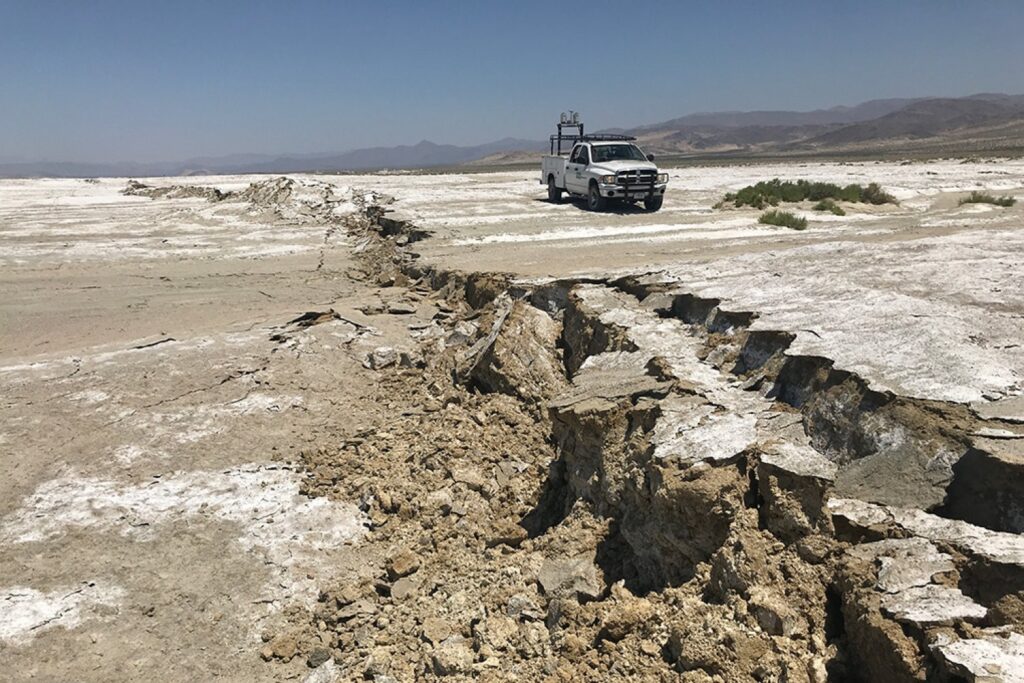
Earthquakes are often synonymous with immediate destruction, shaking the ground and altering landscapes in an instant. However, the aftermath of such seismic events involves a complex process of post-seismic deformation, where areas not initially affected by the quake begin to experience new stress due to changes in their surroundings. This adjustment period eventually leads to a state of recovery. Recent research from the Massachusetts Institute of Technology (MIT) has shed new light on this recovery process, revealing that while the Earth’s shallow crust heals rapidly, deeper layers may recover much more slowly, if at all.
The study, published in the journal Science, challenges the long-held belief that the recovery of the Earth’s crust is a smooth and continuous process. According to the findings, healing occurs swiftly at depths above 10 kilometers, but the mid-crust, which lies deeper, shows a markedly slower recovery rate. “If you were to look before and after in the shallow crust, you wouldn’t see any permanent change. But there’s this very permanent change that persists in the mid-crust,” explains Jared Bryan, a graduate student in MIT’s Department of Earth, Atmospheric and Planetary Sciences (EAPS) and the lead author of the study.
Unraveling the Earth’s Response
To gain a comprehensive understanding of how the Earth’s crust behaves before, during, and after an earthquake, the researchers focused on seismic data from the 2019 Ridgecrest earthquakes in California. This region, characterized by an immature fault zone, experienced the largest earthquake in the state in two decades, followed by tens of thousands of aftershocks over the subsequent year.
By excluding seismic data generated by the earthquake sequence itself, the researchers examined waves from other global seismic activities to observe changes in their paths through the Earth before and after the Ridgecrest events. “One person’s signal is another person’s noise,” Bryan notes, emphasizing the innovative approach of using general ambient noise from sources like ocean waves and traffic, which are also captured by seismometers.
Mapping the Crustal Changes
Utilizing a technique known as a receiver function, the team was able to determine the speed of seismic waves as they traveled through the Earth, revealing changes in conditions such as rock density and porosity. This method is akin to using sonar to understand how acoustic waves interact with objects. With this data, the researchers constructed basic maps of the Earth’s structure around the Ridgecrest fault zone before and after the earthquake sequence.
The results were striking. The shallow crust, extending about 10 kilometers into the Earth, recovered within a few months. In contrast, the mid-crust, which did not experience immediate damage during the earthquake, began to change over the same timescale as the shallow layers were healing. “What was surprising is that the healing in the shallow crust was so quick, and then you have this complementary accumulation occurring, not at the time of the earthquake, but instead over the post-seismic phase,” Bryan explains.
Implications for Energy Budget and Recovery
Understanding how recovery occurs at different depths is crucial for assessing the energy budget of seismic events. This includes the release of energy as waves, the formation of new fractures, and the elastic storage of energy in surrounding areas. Collectively, these factors help scientists understand how damage accumulates and recovers over time.
The study presents two potential scenarios for the recovery of deeper crustal layers: either the deep crust heals over a much longer timescale than observed, or it may never recover at all. “Either of those are not what we expected,” says EAPS Professor William Frank, a co-author of the paper. “And both of them are interesting.”
Future Research Directions
Further research is needed to build a more detailed picture of crustal changes at varying depths. Bryan and his colleagues aim to conduct additional observations to determine the depth at which changes become more pronounced. They also plan to study other regions, particularly more mature fault zones with higher seismic activity, to see if these findings hold true elsewhere.
“We’ll let you know in 1,000 years whether it’s recovered,” Bryan quips, highlighting the long-term nature of this research.
As scientists continue to explore the complexities of the Earth’s response to seismic events, this study underscores the importance of considering both immediate and long-term changes in the Earth’s crust. The findings not only challenge existing assumptions but also pave the way for more nuanced models of earthquake recovery and energy distribution.






